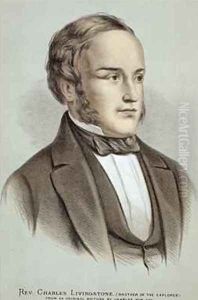Gow, Charles Paintings
Charles Gow was a British artist born in 1829, distinguished for his contributions to the 19th-century British art scene, particularly in the realm of genre painting. Despite not being as widely recognized as some of his contemporaries, Gow carved out a niche for himself with his keen eye for detail and his ability to capture the essence of daily life in Britain during the Victorian era. His works often depicted scenes of rural and domestic life, with a focus on the experiences of ordinary people, which made them resonate with a broad audience.
Gow's upbringing and early life played a significant role in shaping his artistic direction. Growing up in a period marked by rapid social and industrial changes, he was exposed to the contrasting realities of wealth and poverty, tradition and progress. These themes frequently surfaced in his art, reflecting his observations and insights into the societal shifts around him. Gow received his formal art education at the Royal Academy of Arts, where he honed his skills and developed a style that blended realism with a touch of romanticism, making his work appealing yet thought-provoking.
Throughout his career, Charles Gow participated in numerous exhibitions, showcasing his work alongside that of his peers in prestigious venues such as the Royal Academy. His paintings were well-received, praised for their technical proficiency and emotive quality. However, Gow's commitment to genre painting, at a time when the art world was increasingly fascinated with impressionism and abstract forms, meant that his work was somewhat overshadowed by the avant-garde movements of his time.
Despite this, Gow's contributions to British art cannot be underestimated. He captured a vital historical era with authenticity and sensitivity, providing future generations with a window into the Victorian period. His legacy, while perhaps not as celebrated as that of some of his contemporaries, endures through his paintings, which continue to be appreciated by art historians and collectors alike for their beauty and historical value. Charles Gow passed away in 1888, leaving behind a body of work that remains a testament to his talent and his keen observational abilities.
